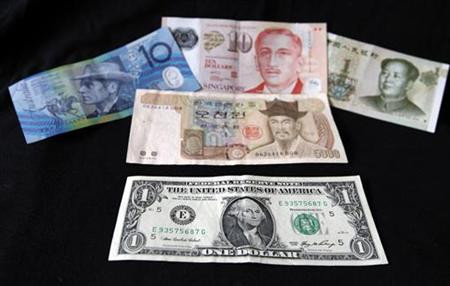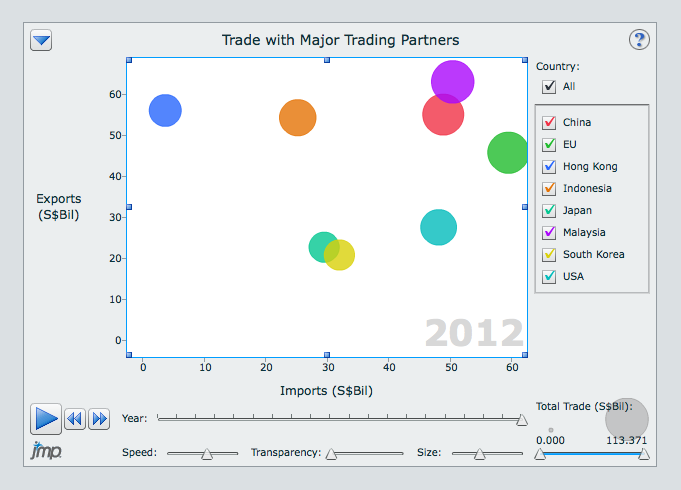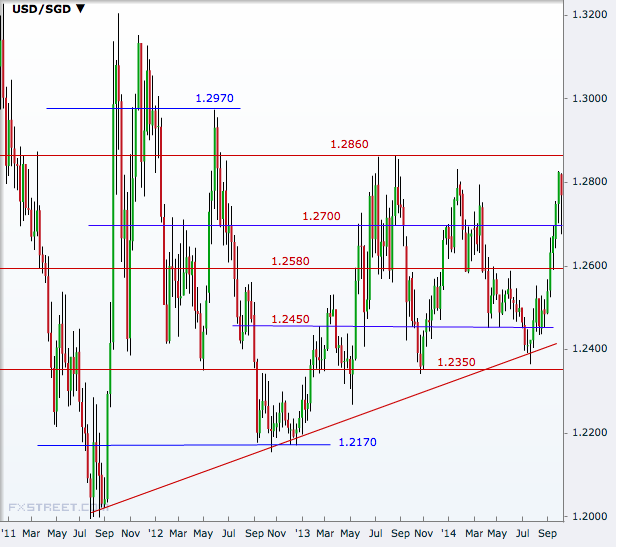Singapore Semi-Annual Monetary Policy Due Next Week Amid Slowing Growth

Singapore is scheduled to release its semi-annual monetary policy statement on 14 October in the backdrop of easing inflation, slowing GDP growth and the currency trading near a new low.
Singapore has a unique monetary policy of controlling domestic inflation by way of managing the exchange rate of the country's dollar with an undisclosed basket of currencies.
How Singapore sets its monetary policy has been studied by many. An IMF working paper suggests: "Singapore's monetary policy has mainly reacted to large deviations in the target variables, which is consistent with monetary policy's medium-term orientation."
Every year, the Monetary Authority of Singapore (MAS) announces the policy on the 14th of April and October. In the April policy this year, the central bank maintained its policy of a modest and gradual appreciation of the NEER policy band of the Singapore dollar.
"There will be no change to the slope of the policy band, and the level at which it is centred. The width of the band will be kept unchanged," an MAS statement showed.
The policy stance is assessed to be appropriate for containing domestic and imported sources of inflation, and ensuring medium-term price stability as a basis for sustainable growth, the central bank said.
Data Background
Singapore's GDP growth was 5% at the end of 2013 but has slowed to 2.4% by the second quarter of 2014. The year-on-year rate of consumer price inflation has dropped to 0.9% by September after peaking at 2.7% in May.
Industrial production has been highly volatile so far this year. From 4.1% in January, it rose to 13.3% in February only to drop sharply below the zero mark to 1.8% by May. Since then, it has been inching up steadily and touched a four-month high of 4.1% in August.
The unemployment rate, after falling from above 3% levels in 2009, has been steady between 1.8% and 2.1% for the past three years.
The average rate of inflation so far in 2014 is 1.51% and the latest rate being sharply below that could be a matter of consideration for the Singapore central bank.
Trade Scenario
Singapore's trade surplus increased to S$6.79bn in August from S$4.09bn in the previous month, as imports fell much faster than exports. The surplus was the biggest since October last year.
Total exports declined 1.2% year-on-year to S$42.85bn while imports decreased 8.6% S$36.05bn, from July.
Singapore's major trading partners are Malaysia, China, Indonesia, South Korea, the EU27, the US, Hong Kong and Japan. The TWI (trade-weighted index) ratio or individual indices are undisclosed.
The Department of Statistics Singapore says that trade with major trading partners such as Malaysia, China, Indonesia and South Korea increased in 2012, while trade with the EU27, the US, Hong Kong and Japan decreased.
Since 2009, the value of exports exceeds imports for Singapore's trade with China. In comparison, the value of imports exceeds exports for Singapore's trade with the US since 2006, as per official statistics.
The chart below shows the varying size of trade relations of the city state, taken from the statistics department website.

Currency Movement
The USD/SGD chart has been forming a 'higher lows-steady highs' pattern and the pair has been stuck in a range of 1.2340-1.2862 over the past one and a half year.
The pair is now holding near the upper band as the sharp gains in the greenback has pushed the local unit to its weakest level in more than nine monts by the first week of this month.
After hitting as high as 1.2826 on 3 October, the pair eased to 1.2675 by last Thursday and then ended the week at 1.2767.
See the chart below for immediate resistance and supports for USD/SGD plotted on a weekly chart.

© Copyright IBTimes 2025. All rights reserved.






















